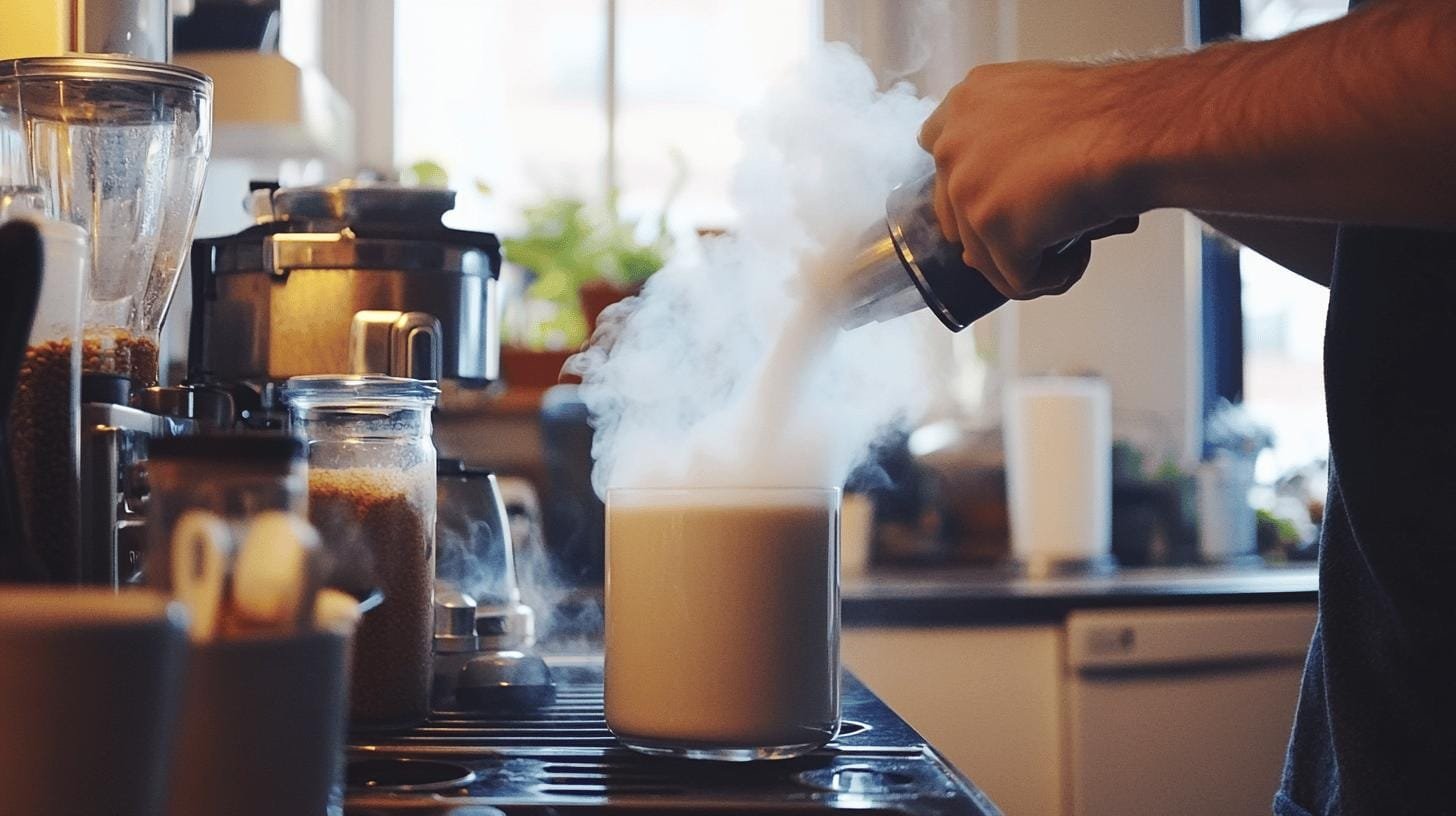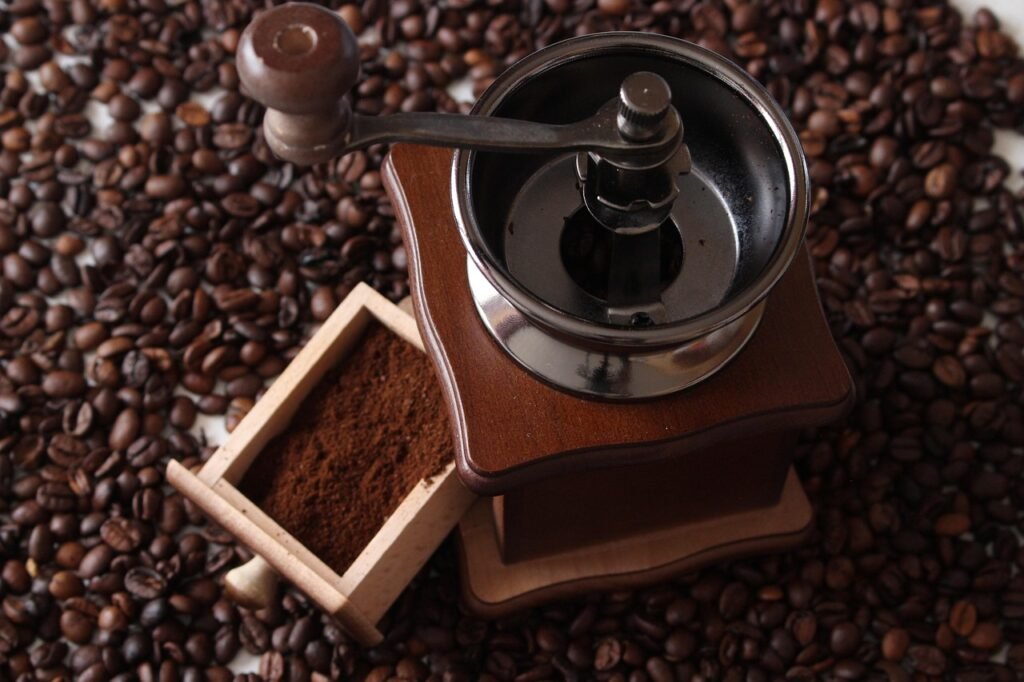
Artisanal Rituals for a Memorable Customer Experience
How can brands create a more balanced and memorable customer experience by blending artisanal product quality with thoughtful everyday rituals that keep people coming back?

Can latte art be mastered with almond milk’s complex nature? Coffee aficionados often steer toward cow’s milk for latte art, dismissing almond milk’s potential. Yet, almond milk – with its unique, nutty profile and foaming challenges – is carving its niche as a viable alternative in the world of coffee artistry. Navigating almond milk’s intricacies can transform your coffee experience, elevating each cup with delicate designs and flavors. This article explores almond milk’s unique capabilities, revealing the techniques to master latte art with this non-dairy option and achieve coffee balance.
Almond milk is a popular non-dairy option made by soaking almonds in water, then grinding and straining them. It gives a nutty milk substitute. Although it can be tricky to foam, it’s used in latte art, a growing coffee industry trend.
Almond milk’s mild flavor perfectly matches espresso, making it a favorite among coffee lovers. Plus, it’s widely available and affordable, boosting its popularity.
Creating latte art with almond milk means understanding its unique makeup. It has less protein than cow’s milk, making foaming harder. Yet, mastering it can greatly enhance your coffee in several ways:
Coffee lovers cherish these features, using almond milk to improve both taste and appearance in their brews.

To create latte art with almond milk, choosing the right brand is key. Barista-style almond milk, such as Califia Farms or Almond Breeze Barista Blend, works best. These are made with added stabilizers and fats to help mimic dairy milk’s frothing traits, resulting in better foam and texture.
The ideal temperature for frothing almond milk is 150°F (65°C). This helps create smooth microfoam essential for beautiful latte art. Frothing at this heat keeps the right consistency without splitting or losing its nutty taste.
To froth almond milk well, try this method using a steam wand:
Following these steps helps overcome almond milk’s frothing challenges, boosting your latte art skills.
Good pouring skills are vital for both look and taste in almond milk latte art. Proper pouring blends milk and espresso for rich flavors and pretty patterns. It balances taste and visuals, lifting your home coffee game.
For impressive almond milk latte art, focus on the details. Follow these steps:
Visual aids like videos or images can bolster your understanding. They offer insight into nuances, helping beginners hone skills for intricate latte art with almond milk.

Almond milk’s low protein content brings unique challenges to latte art. Common issues include splitting or poor foaming, affecting texture and appearance. These usually stem from overheating or outdated almond milk, which separates milk and foam, changing taste.
To address these problems, try these tips:
Consistent practice and experiments with these tips can enhance both appearance and taste of almond milk latte art.
Picking the right almond milk impacts frothing and art quality. Brands labeled “barista use” offer superior foam and consistency due to stabilizers and higher fats. These mimic dairy milk, producing creamy microfoam ideal for latte art.
Recommended brands for superb frothing include:
Barista editions improve foam texture and consistency, allowing for more detailed designs. These choices not only elevate art beauty but also enrich your coffee experience.
Achieving latte art with almond milk combines understanding different frothing techniques, mastering pouring skills, and selecting the right almond milk. Overcoming common issues requires using fresh milk and maintaining the correct temperature to achieve the desired consistency. Recommended brands, such as Califia Farms or Almond Breeze Barista Blend, support better results with their superior frothing properties. Despite challenges, with practice and exploration, creating stunning almond milk latte art can elevate the coffee experience. Embrace the creativity and satisfaction that comes from perfecting your latte art with almond milk.
Latte art is possible with almond milk by selecting suitable brands and using proper frothing techniques to achieve the desired texture for creating art.
Barista edition non-dairy milks, such as those from Califia Farms and Almond Breeze, are formulated to provide optimal frothing and foam for latte art.
Steaming almond milk without a steamer involves heating it gently on the stove and whisking vigorously or using a frother to achieve a frothy texture.
Using a frother, froth almond milk by starting with cold milk, submerging the frother tip, and moving it up and down until reaching a velvety texture.
Almond milk labeled as “Barista” such as Califia Farms or Almond Breeze Barista Blend, is specifically formulated to achieve better froth and consistency for latte art.

How can brands create a more balanced and memorable customer experience by blending artisanal product quality with thoughtful everyday rituals that keep people coming back?

Independent coffee shops have always been about more than caffeine—they’re hubs of creativity, connection, and care. As café culture continues to evolve, new trends are

Introduction Independent cafes win when they feel like the neighborhood’s living room and operate with the discipline of a great kitchen. Below is a quick

Discover how top specialty coffee brands create lasting loyalty through storytelling, sourcing, and community connection. Real tips from 6 industry experts.

Discover the ultimate showdown between two beloved coffee brewing methods: the French press and Chemex. Explore how each technique caters to distinct palates, with the French press delivering bold flavors and the Chemex presenting a bright, clean taste.

Unlock the secrets to brewing the perfect cup of coffee with our comprehensive guide on using a coffee scale. Discover how precise measurements enhance flavor and consistency while eliminating bitterness.

Discover how water temperature plays a vital role in brewing the perfect cup of coffee. This article delves into the ideal temperature range of 195°F to 205°F for optimal flavor extraction, enhancing the enjoyment of high-quality beans.

Discover the world of curated specialty coffee bundles, perfect for enthusiasts seeking quality and craftsmanship. This article explores the benefits of ethically sourced, small-batch beans from brands like Equipoise Coffee, offering diverse flavor profiles that elevate your brewing experience.

Discover the art of manual brewing to elevate your coffee experience! This article explores various techniques like pour-over, French press, and AeroPress, revealing how they enhance flavor and your connection to every cup.